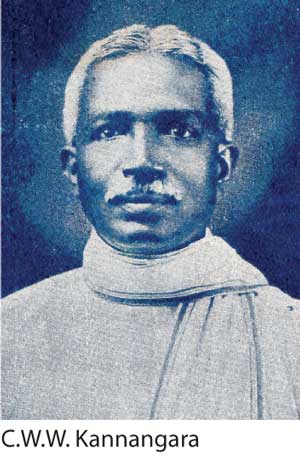Reply To:
Name - Reply Comment
Last Updated : 2024-04-25 22:46:00
In his ‘Among My Souvenirs’ Regi Siriwardena depicts the flaws and the contradictions that led to the fall from power of the pre-1956 elite. The plot teeters until the end between autobiographical fiction and historical actuality, particularly with respect to the protagonist, David Gunawardene, and his  friend, Wije. These two characters, moreover, represent a bifurcation of the author’s political beliefs, dangling between the privileged childhood of David and the more plebeian, less insular upbringing of Wije. The story ends with disillusionment for both of them over the murder of a remnant of the pre-1956 elite: Mark, a Westernised Tamil Christian whose education abroad, and whose repudiation of his own privileged upbringing, makes him idealise a society of chauvinists and rhetoricians, the same society that kills him in cold blood.
friend, Wije. These two characters, moreover, represent a bifurcation of the author’s political beliefs, dangling between the privileged childhood of David and the more plebeian, less insular upbringing of Wije. The story ends with disillusionment for both of them over the murder of a remnant of the pre-1956 elite: Mark, a Westernised Tamil Christian whose education abroad, and whose repudiation of his own privileged upbringing, makes him idealise a society of chauvinists and rhetoricians, the same society that kills him in cold blood.

Mark represents the rebellion against a particular social segment that thrived on (as that old lady, musing on the world that existed before 1956 in their milieu, tells us in Ruwanthi de Chickera’s Dear Children Sincerely) dinner parties and unfinished puddings. What is curious to me about this social segment, largely upper class and English educated, is that they were the people and the leaders who failed to prepare the country for the perils that beset us after the election of S. W. R. D. Bandaranaike. They were not equipped with the proper mindset, the proper attitudes, to take us beyond the chauvinism which 1956 unearthed rather badly. As Siriwardena frequently noted in his essays, being largely a postcolonial elite comprising the descendants of the colonial bourgeoisie, they were too complacent to contemplate productively on the transformation of the country to a nation state unhindered by racial discord.
The majority of this country, before and after 1943, were educated in Sinhala or Tamil
The rift between class consciousness and racial-ethnic consciousness has not, historical texts confirm, always been that easy to sustain. As no less a figure than Professor Nalin de Silva has noted, the proponents of federalism and Tamil chauvinism were by products of the privileged, class bound status accorded to the Vellala caste who formed the bedrock of the Civil Service (before the granting of the suffrage in 1931, bitterly opposed by leaders of that caste-bound community). They were the elite, in other words, predicated on the economic and, by default, the political rather than any racial or religious considerations. Let’s not forget, after all, that one of the first private organisations set up to oppose the half-baked reforms paraded as democratic change by the colonialists was the Jaffna Youth Congress, in which the North and the South cohabited in ways which today seem inscrutably idealistic. Had this culture of idealism thrived, it is even possible to contemplate a peaceful transition to the federalist constitution that has got both Sinhalese and Tamil nationalists in a battle for power with, and against, each other today. The idealism, however, soured.

And that idealism today largely flourishes in a context where its greatest proponents and champions come, not from the grassroots, but from the policy elite: the leading members of the NGO intelligentsia, the alternate State sector set up to overlook reforms that delve into the Constitution and ethnic harmony. To me this is a tragedy because it has served to strengthen the (largely mistaken) belief that cosmopolitanism is the preserve of those who are against nationalism. There is much on which I disagree with Jehan Perera, but on one point I agree with him: that Sri Lanka is not a nation, rather a nation of nations, predicated on race and faith. To get those nations together is the difficult task of the government in power, difficult because the government itself, while championing overtly the eventual triumph of a national consciousness over a racial consciousness, covertly caves into the demands of irrational chauvinists.
Had this culture of idealism thrived, it is even possible to contemplate a peaceful transition to the federalist constitution that has got both Sinhalese and Tamil nationalists in a battle for power with, and against, each other today. The idealism, however, soured
The best way for such an idealism to flourish would be this: get the multitude to support it. How does one get the multitude to do this? By a cohesive campaign, conducted entirely in the vernacular, that is different in scope and strength to the anti-Dutugemunu anti-Buddhist a historicism of the campaigns that preceding governments affirmed in the name of championing inter-ethnic harmony, by vilifying each and everyone who stood for the Sinhala Buddhist collective. The Sinhala Buddhists cannot be considered as sacred cows, by any stretch of the imagination, but nor should they be demonised for being who they are: as a global minority, they do not have the luxury of numerical strength which most other collectives do. It’s a tentative balance that must be struck, and if the strategy is to succeed, the place to start would not be the parliament, or the media, but the most important part of the public sphere: our schools.
Here I go back to the pre-1956 elite, which Mark and David Gunawardene were harbingers of in Siriwardena’s book, to point out an interesting contradiction at the heart of their milieu: educated in elite schools, they believed that the absence or rather absenting of a racial consciousness in their classrooms was synonymous with the ideal of inter-ethnic harmony. In other words, cultural apathy was taken as the password to a racially unhindered world. Siriwardena, in an essay on the potential of our schools to do away with those rifts, argued cogently that this misconception belonged to and was sustained by a specific social strata which, at the time of the Kannangara Reforms in 1943, comprised about one-seventh of the total student population, a paltrier one-fiftieth if we were to consider only those who were completely educated in English (without those who received an education in both English and the vernacular).

Now numbers don’t lie. The majority of this country, before and after 1943, were educated in Sinhala or Tamil. The minority (L. H. Mettananda would call them a “microscopic minority”) who were totally or partially educated in English were apathetic to anything but their milieu, which was tempered by a culture of indifference to ethnic and religious realities. Here I quote Siriwardena: “... they failed to recognise that the ‘common identity’ which they remember sharing was less a common ethnic identity than a class identity, which transcended their ethnic identity as Sinhalese, Tamils, Muslims, or Burghers. Fluency in the English language and their Western-style dress were distinguishing marks of that class identity, which was in many ways defined through differentiation from the rest of the nation, the majority of whom, who spoke in Sinhala or Tamil, went barefoot and wore sarong, verti, or cloth and jacket.”
This conflation of the particular with the general, i.e. the misconception that their elitist education would prove valid for the country, was a reflection of the attitude of indifference which the leaders from this milieu exhibited even when our polity was overtaken by calls for separatism on the one hand and calls for majoritarianism on the other. The Kannangara Reforms, and the advent of democratisation in the education sector, extending to both schools and Universities, achieved two distinct things: one, the opening up of those elitist institutions to the village boy and girl through an examination that standardised intelligence and merit as the gateway to social mobility, and two, the opening up of Central Schools around the country

that could reckon with those elitist institutions.
The single most important social process unleashed with 1956 was Free Education, because it freed our education sector (the most important part of our public sphere, as I pointed out at the beginning) from the elitist minority that believed in a common identity transcending racial identities, an identity that would never materialise without a key prerequisite: the sustained separation of the polity between the minority and the multitude. Free Education did away with that separation.
In this new empowered student population – the descendants of the Ranjiths (Charitha Thunak), the Sirisenas (Thunman Handiya), and the Senas (Akkara Paha) who aspired for social advancement – I see a new hope. True, this population has always been with us, but we need them now more than ever, at a time when cosmopolitanism has been wrongly marketed as anti-nationalism and nationalism has been marketed as anti-cosmopolitanism. They sustain a curious contradiction within themselves, between their roots and their accommodation of a diluted, transcendental identity that comes with exposure to institutions which have opened up to other collectives. Personally for me, there has never been a better time to tap into their dualistic attitude towards that contentious issue of racial discord versus racial harmony, and personally for me, they remain an integral part of the solution to that issue. Right here. Right now.
Sangaralingham Saturday, 23 December 2017 09:37 AM
Educational level in SriLanka has deteriorated compared to other countries especially s.korea hongkong
Sangaralingham Saturday, 23 December 2017 09:43 AM
It is an attitude the concept of minority majority. Politicians take this to their advantage to make them or psudopopular to win votes unity come with an attitude collaboration cooperation with attention to details re education skills knowledge collaboration cooperation which our dociety must approach eith humanitarian view to make nation progressive not isolated separated. Do one can say attention concentration cooperation eith fresh ideas past is gone present is temporary future need vision

Add comment
Comments will be edited (grammar, spelling and slang) and authorized at the discretion of Daily Mirror online. The website also has the right not to publish selected comments.
Reply To:
Name - Reply Comment
US authorities are currently reviewing the manifest of every cargo aboard MV
On March 26, a couple arriving from Thailand was arrested with 88 live animal
According to villagers from Naula-Moragolla out of 105 families 80 can afford
Is the situation in Sri Lanka so grim that locals harbour hope that they coul